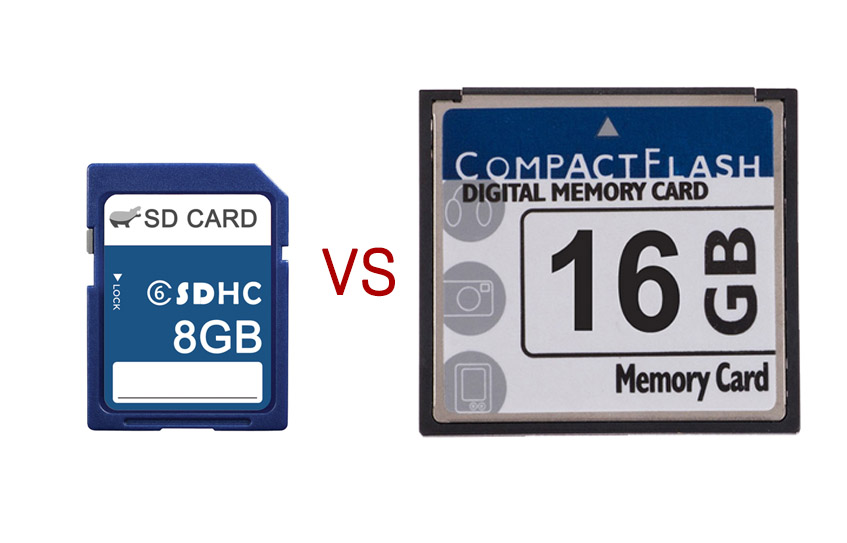Latest Posts
Which is better a CF card or an SD card? What is the difference between them?
Abstract: In its early days, the CF card was only used as a data storage device for portable electronic devices. It revolutionized the way flash memory was used. SanDisk was the first company to produce CF cards with flash memory in 1994, and it also developed the relevant product specifications. A variety of devices have adopted its physical format at this time.
Which is better, a CF card or an SD card? And what is the difference between them?
Many photographers are perplexed by the camera’s dual card slot design, which accepts both CF and SD cards. We’ll compare the differences between CF and SD cards today.
SanDisk invented and introduced the CF card (Compact Flash) in 1994. The CF card standard group now has around 250 members, with SanDisk as the initiator and Kodak, Canon, Nikon, Olympus, and other imaging heavyweights as the core, representing practically all digital camera makers. The CF card contains a built-in controller in addition to being a storage device. The most important characteristic is that it is very compatible. The external interface of the flash memory chipset, regardless of its capacity, is the standard ATA/IDE interface, which can be utilized with either 3.3V or 5V. Not long ago, Lexar announced a new large-capacity CF memory card featuring UDMA7 technology with read and transfer speeds of up to 1066x (160MB/s) at the CES event in Las Vegas. Of course, the cost is as incredible as the speed.
Secure Digital Card (SD card) is an abbreviation for Secure Digital Card, which literally translates to “Safe Digital Card” in Chinese. It is a new memory product created by the Japanese Panasonic Corporation and Toshiba Corporation, and the SanDisk Corporation of the United States. The SD card has 9 pins. The objective is to increase transmission speed by switching from serial to parallel transmission. SD cards on the market now refer to SDHC cards, or “high-capacity SD memory cards”, and their main advantage is their large capacity (2GB-32GB). SDHC requirements must be followed by all SD cards having a capacity larger than 2GB. According to the specification, SDHC cards must have at least a Class 2 speed, and there must be an SDHC logo and a speed class logo on the card. The SDXC, which was introduced in 2009, has a maximum capacity of 2TB (2048GB). SDXC stands for SD eXtended Capacity, and it is a recently proposed standard. It can be expanded to a maximum capacity of 2T and can also support a transmission speed of 300M/s. As a result, it is a high-speed SD memory card.
CF cards are thicker and larger than SD cards in appearance. The CF card’s built-in controller and ATA/IDE interface add volume and expense, but data security is improved.
SD cards are inexpensive and small. SD slots are found on most laptops and all-in-one computers, such as the iMac. SD cards are thus more handy and simple to use than CF cards.
We can see from the above comparison that camera manufacturers are really concerned about data security and convenience. If your camera has a dual card slot design that allows you to utilize a CF card and an SD card at the same time, I recommend using the CF card to store RAW files and the SD card to store JPG files. In this way, the CF card’s security and stability may be used, but the SD card’s high-speed and convenient experience can be enjoyed.












Leave a comment